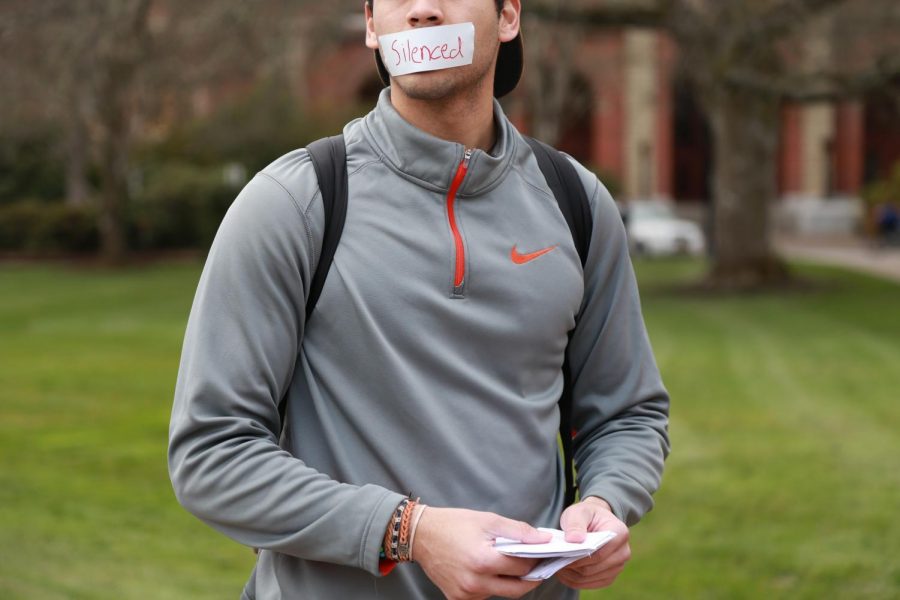Students encounter microaggressions
March 6, 2017
OSU works toward educating through discussion
Along with shedding light on the history of people certain buildings on campus are named after, the Solidarity March highlighted the presence of microaggressions within Oregon State University.
According to Jason Dorsette, the OSU associate director of Diversity and Cultural Engagement, “Microaggressions are discriminatory incidents that come from well-intended people that do not have the historical background that what they’re saying or doing is wrong. They are unintentional racist or discriminating instances.”
In between the chants and facts about OSU building history, Maysa Shakibnia, a protest attendee, was able to give her definition of a microaggression.
“When people think of racism they think of only overt racism, so that’s what it becomes synonymous with, but microaggressions do take a toll on individuals. So microaggression is not overt racism, or something you see, but it’s the little things that happen, whether you can’t find you bandaid of your color, or someone makes discouraging remarks to you based on your identity,” Shakibnia said.
Microaggressions happen everyday and go unnoticed, according to Dorsette.
“The way society has created different labels on us and the media, through TV, advertising, social media, it has propelled injustices like these. People are experiencing and using microaggressions unknowingly,” Dorsette said.
Julia Matthew, a peer facilitator at the Eena Haws Native American Long House, took the understanding of a microaggression to the next step in her own personal life examples.
“In high school I went to a very white high school and my friends would say, ‘Oh you’re my pretty Native,’ which is like a compliment, but at the same time, the backside of that is that natives aren’t pretty, and that’s a microaggression,” Matthew said.
In attempts to continue the search for a complete definition for microaggressions, and the damage that can be made, the place to go was to the protest itself.
According to Shakibnia, it’s these little forms of racism that affect people and students of color.
“These instances are caused through a lack of knowledge and a lack of understanding,” Dorsette said.
OSU is working toward educating, informing and changing through bold, difficult discussions, according to Dorsette. These discussions need to happen in order for OSU community members to make positive social change for the future.
“The thing about us is we have discussions and we have bold discussions. You should go into these discussions realizing it’s going to be hard and that I may be triggered by something or someone, and they may not understand my situation at the time, but we have to have hope in these conversations and try our hardest to give others the benefit of the doubt. We have to hope we are planting seeds of wisdom and hope that those seeds flourish and grow into something better,” Dorsette said.











































































































